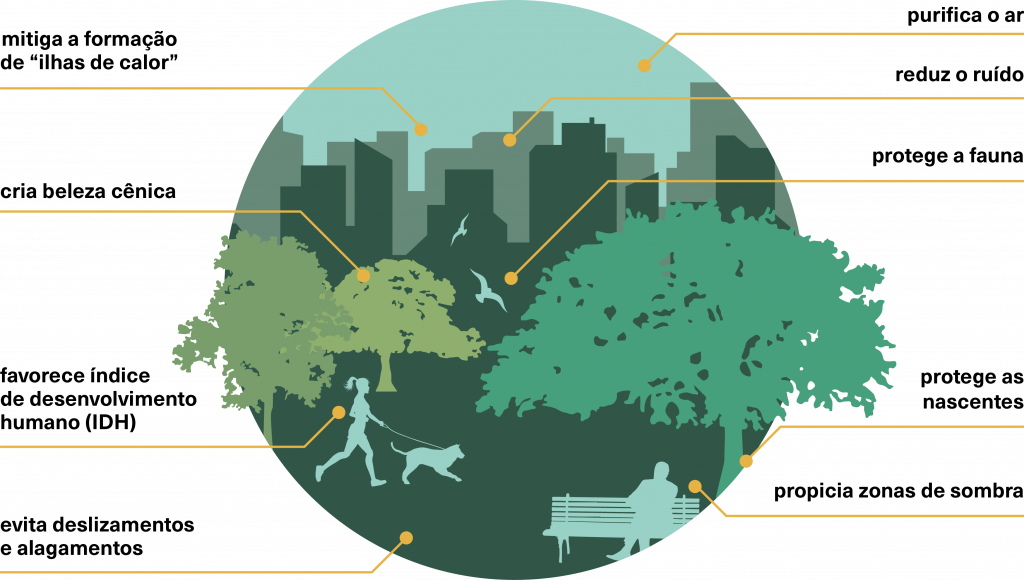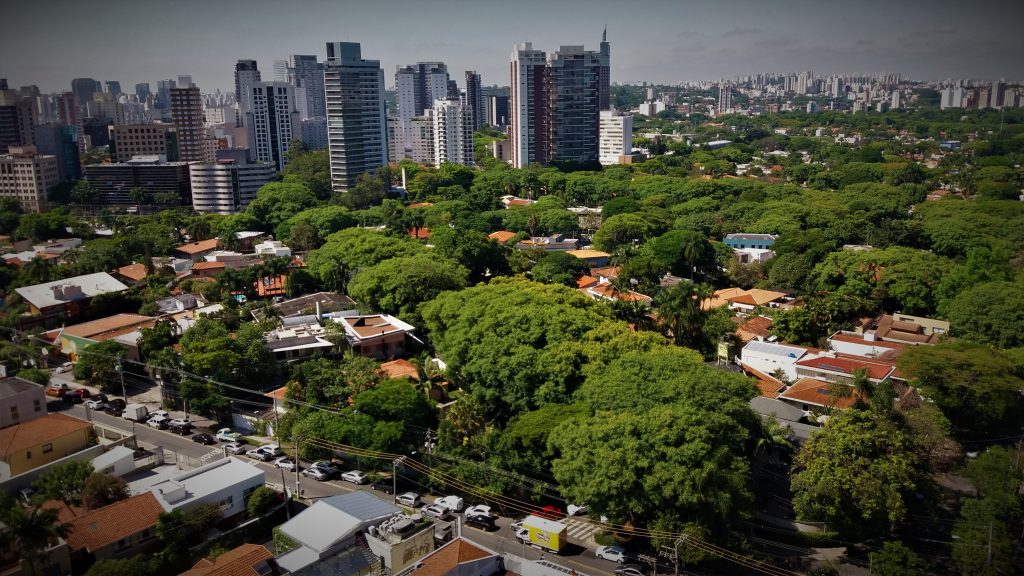Urban Forest
The urban forest encompasses all vegetation with a woody trunk present in urban agglomerations, whether in private or public green areas (squares and parks), or in the afforestation of streets.

Climate change and the resilience of cities
Such is its importance today, in the face of climate change and the growth of urban concentrations, with a significant reduction in vegetation cover, that the recommendation of several national and international organizations is that it be permanently monitored and that there is a commitment by all to its maintenance and expansion, in favor of the sustainability and resilience of cities.
The current situation in the State of São Paulo
Even without available data on the current situation of most cities in the State of São Paulo, and the existence of municipal afforestation programs, georeferenced systems point to the need to expand these initiatives. The Treepedia , for example, maintained by the Senseable City Lab, from the Massachusetts Institute of Technology, shows that 2 cities – São Paulo and Franca – have a much lower tree coverage than most of the other 28 cities in the world monitored, with only 11.7 % and 13.7%, respectively.
Tree cover management

The planning and management of urban afforestation, however, involves a set of complex, costly activities and several interactions, often conflicting, with the urban infrastructure, with public and private agents. Thus, the necessary improvement of the urban scenario in our state in relation to this aspect will also require, not only the resizing, but also the planning of these activities on new bases.
The demand for wood and the potential of the urban forest
According to the state government, in the year 2021, 40% of the illegally deforested wood in the Amazon passes through the roads of São Paulo (G1 – SP). Furthermore, it is known that the State is the largest consumer market in the country for tropical sawn wood (about 17%), out of a total of 2.4 million m3, not to mention the 29.2 million m3 of logs consumed in the country in 2020 (ITTO, 2020), mostly used for the manufacture of furniture, floors and other items of civil construction.
On the other hand, the numbers related to pruning and removal of urban trees are also significant: in the city of São Paulo alone, in January 2021, 776 tree falls were recorded (G1 – SP) and, from January to In September of the same year, City Hall carried out 123 thousand pruning (G1 – SP2) – at a monthly cost of R$ 4.6 million (2019) -, which was not enough to meet existing requests.
